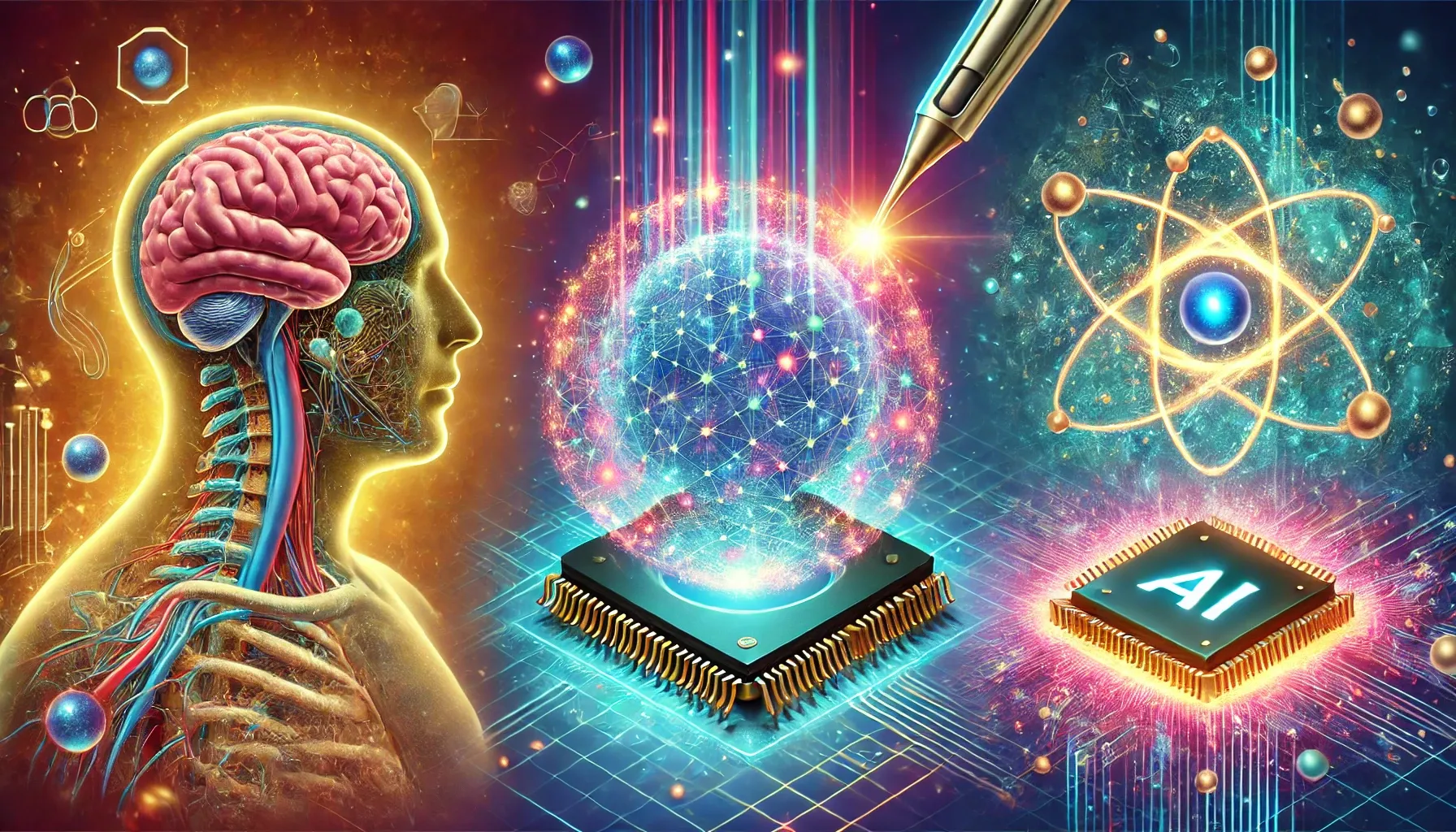Cancer Treatment That Spares Healthy Tissue? ⋆ AI of the week ⋆ Willow - Google's new Quantum chip
From revolutionizing cancer treatment with precision-targeted radiation, to groundbreaking AI advancements like NVIDIA’s Meshtron and Google’s Gemini 2.0, and Google’s quantum chip Willow solving errors to unlock the future of computing...

It's a wild ride this week, strap in!
3 things in 3 minutes:
Thing 1 - Cancer Treatment That Spares Healthy Tissue?

UCSF scientists are developing a groundbreaking therapy that could reshape how we treat cancer with radiation. It’s a method that zeroes in on cancer cells while sparing healthy tissues - solving one of the biggest challenges of traditional radiation therapy!!
The Approach
1️⃣ Target the Mutation
The drug sotorasib binds to a mutation found in certain cancer cells, known as KRAS G12C. This mutation acts like a beacon, signaling the drug to latch onto the tumor.
2️⃣ Deliver Radiation
Once the drug marks the cancer cell, an antibody designed to recognize the drug locks onto it. This antibody carries a dose of radiation right to the tumor.
3️⃣ Destroy the Tumor
The cancer cells are eradicated by targeted radiation, with no unnecessary harm to surrounding tissues.
This method creates a focused attack, delivering radiation only to where it’s needed. The result is a treatment that avoids the harmful side effects of traditional radiation.
Why It Matters

Radiation has always been effective against cancer but comes at a cost - damaging healthy cells and causing fatigue, burns, or long-term health issues. This new therapy changes the game, attacking the cancer without collateral damage.
It’s precise. It’s targeted. And it’s a step closer to treatments that focus on the problem without harming the rest of the body.
What’s Ahead?
The work is still in its early stages, but the potential is enormous. UCSF is expanding this approach, testing ways to make it widely available for different cancers.
Thing 2 - AI of the week
- NVIDIA Meshtron High-Fidelity, Artist-Like 3D Mesh Generation at Scale - quality level at what a human modeler would create
- Google launched Gemini 2.o - their model for agentic experiences. (Did I mention already 2025 will be agentic year?)
And it seems to be a top-notch model.
Plus from Google AI Studio you can share your screen or camera with it and talk about it with the model in real time... Wild!

- OpenAI released Sora - their new model (and platform!) to generate new videos from text, bring images to life, or extend, remix, or blend videos you already have

- OpenAI also released live video and screen sharing to ChatGPT Voice
- Meta released Llama 3.3 70B - new open source model that outperforms their previous Llama 3.1 70B model. It delivers similar performance to their biggest Llama 3.1 405B model!
- xAI released Aurora - a new autoregressive image generation model
it excels at photorealistic rendering and following text instructions - Cognition Labs made Devin AI software engineer available (starting at $500/month).
It's an autonomous AI engineer capable of tackling tasks like, debugging code, building apps etc.
Thing 3 - Willow, Google's state-of-the-art quantum chip
Google made a chip so advanced it completed a calculation in under 5 min that would take today’s fastest supercomputers longer than the age of the universe (10 septillion years in case you were wondering).
Willow solves one of quantum computing’s biggest hurdles: errors.
By scaling up qubits while reducing errors, Willow clears a decades-old roadblock, and brings us closer to practical, world-changing quantum computers.
Why does this matter? Quantum machines could be tackling real-world challenges like discovering new medicines, designing better batteries, or powering next-gen AI... and they are closer than ever.
Cheers, Zvonimir